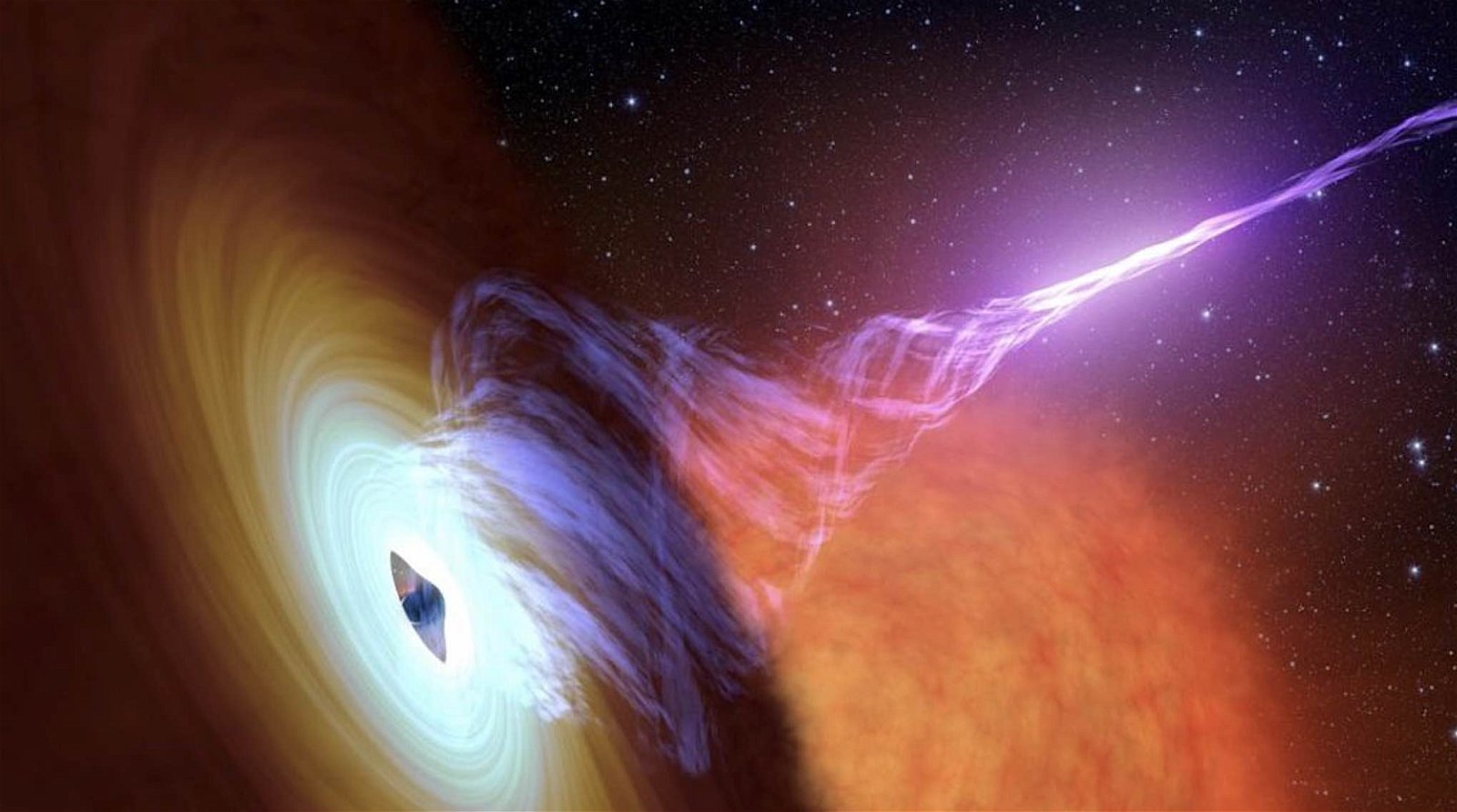Researchers have successfully produced high-density “plasma fireballs” on Earth, a groundbreaking achievement that recreates the conditions that naturally occur around black holes and neutron stars.
The breakthrough marks the first successful generation of relativistic electron-positron pair plasmas under controlled lab conditions, which denotes a state of matter that generally only occurs in deep space. The work is the result of an international collaboration between researchers at the University of Rochester’s Laboratory for Laser Energetics (LLE).
Successfully producing relativistic electron-positron pair plasmas marks a new milestone in plasma science and could help scientists harness a deeper understanding of some of the most extreme regions in our universe.
The Densest Objects in the Universe
Of all regions in the cosmos, black holes and neutron stars are among the densest. Surrounding these ultra-dense celestial objects are plasmas that consist of electrons and positrons that are moving so fast that they near the speed of light.
While these relativistic electron-positron pair plasmas are common throughout the universe, scientists have faced difficulties in attempting to recreate them in the lab.
Now, researchers at the University of Rochester’s LLE and their international collaborators have finally succeeded at the task in an experiment that produced even more of the plasma pairs than had previously been reported by as much as two to three orders of magnitude.
“The laboratory generation of plasma fireballs composed of matter, antimatter, and photons is a research goal at the forefront of high-energy-density science,” said Charles Arrowsmith, a physicist from the University of Oxford who will soon join the LLE.
Arrowsmith, the lead author of a new study detailing his team’s findings, says previous limitations largely originated from theoretical studies that attempted to characterize these unique plasmas in the absence of their successful generation in the lab.
“Relativistic electron-positron plasmas are ubiquitous in extreme astrophysical environments such as black-hole and neutron-star magnetospheres, where accretion-powered jets and pulsar winds are expected to be enriched with electron-positron pairs,” Arrowsmith and his colleagues write in their new study.
“So far, our experimental inability to produce large yields of positrons in quasi-neutral beams has restricted the understanding of electron-positron pair plasmas to simple numerical and analytical studies,” the study’s authors write.
Producing Plasma Fireballs in the Lab
Arrowsmith and the Rochester team’s breakthrough experiment occurred at the HiRadMat facility at the Super Proton Synchrotron (SPS) accelerator at CERN in Geneva, Switzerland. More than 100 billion protons were harnessed from the SPS accelerator, each possessing kinetic energy 440 times greater than its resting energy.
During their experiment, the team generated quasi-neutral electron-positron pair beams that exhibited behaviors that the team says were consistent with those associated with genuine plasmas in space.
“We present the first experimental results confirming the generation of high-density, quasi-neutral, relativistic electron-positron pair beams using the 440 GeV/c beam at CERN’s Super Proton Synchrotron (SPS) accelerator,” the team writes in their new study.
Arrowsmith said in a statement that the new breakthrough “opens up an entirely new frontier in laboratory astrophysics,” adding that the team’s findings make it possible “to experimentally probe the microphysics of gamma-ray bursts or blazar jets.”
In addition to successfully producing astrophysical plasmas, the research team also developed new methods of adjusting the pair beams that will allow future controlled studies of plasma interactions. This could allow significant new advancements compared with past studies that relied mostly on simulations.
“Satellite and ground telescopes cannot observe the smallest details of distant objects, and we have relied on numerical simulations,” said Gianluca Gregori, a physics professor at the University of Oxford and one of the new study’s co-authors.
“Our laboratory work will test and validate these predictions,” Gregori said.
Arrowsmith and the team’s new study, “Laboratory realization of relativistic pair-plasma beams,” appeared in the journal Nature Communications on June 12, 2024.
Micah Hanks is the Editor-in-Chief and Co-Founder of The Debrief. He can be reached by email at micah@thedebrief.org. Follow his work at micahhanks.com and on X: @MicahHanks.

